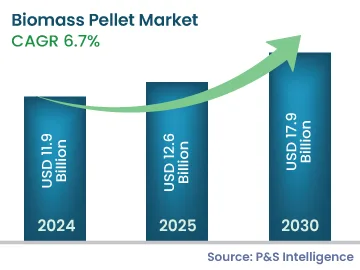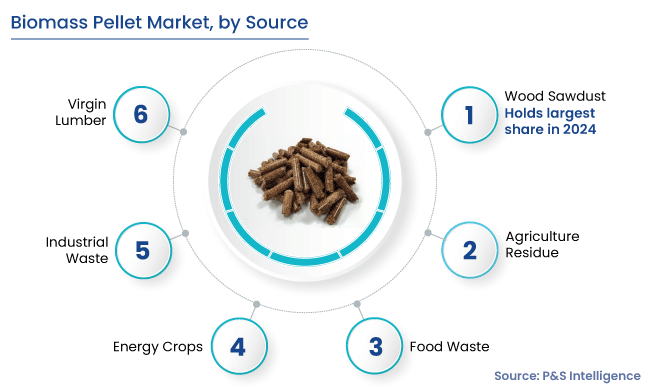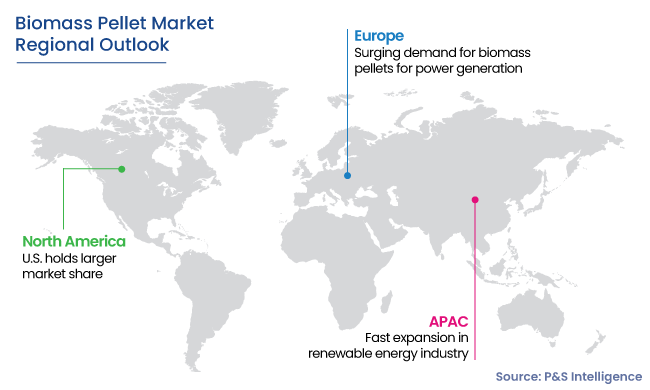Biomass Pellet Market Analysis
The global biomass pellet market size stood at USD 11.9 billion in 2024, and it is projected to grow at a CAGR of 6.7% during 2024–2030, to reach USD 17.9 billion by 2030. The growing awareness of the benefits of using biofuels and other renewable energy sources for residential, commercial, and industrial heating and power generation applications among consumers is a major factor driving the growth of the market. Moreover, the government initiatives to promote renewable energy sources, increasing demand for low-carbon fuel, and easy availability of raw materials bolster the demand for biomass pellets.
Renewable energy sources often have negligible environmental consequences when compared to other energy sources, thus these are considered as an eco-friendly solution. Moreover, the rising awareness about the negative environmental consequences of products based on fossil fuels along with the scarcity of available resources has increased the demand for biomass pellets. Since biomass pellets are made from wood, these are used as a renewable source of energy, and, they are carbon-neutral substances, which leave zero-carbon emissions on burning.
Global warming is a major environmental concern all over the world. Several national and international organizations are enacting tough environmental rules to reduce carbon emissions. The use of biomass pellets provides an efficient alternative for reducing global dependence on fossil fuels and lowering greenhouse gas emissions in the environment. Moreover, biomass pellets are convenient and easy to use, and they require less space for bulk storage.
The requirement to replace fossil fuels is the biggest opportunity. Because of the growing need for energy, there is a global need for fossil fuels. Fossil fuels, which include coal, natural gas, and petroleum, are non-renewable resources that release stored energy through burning. They supply over 80% of the energy consumed globally, but are also the major source of air pollution. Thus, the substitution of fossil fuels might present a chance for market expansion.
Biomass pellets have a low energy density and involve difficult land acquisition for harvesting and storing. As a result, the pre-treatment of biomass is quite expensive and may not be able to support small enterprises or organizations. Moreover, wood pellets, a renewable energy source, are made from wood sawdust or other ground woody materials. They are co-fired in coal-based power plants and mono-fired in coal power plant conversions to reduce greenhouse gas emissions from the production of electricity. However, the high cost of raw materials like wood pellets may hinder the growth of the biomass pellet industry.





